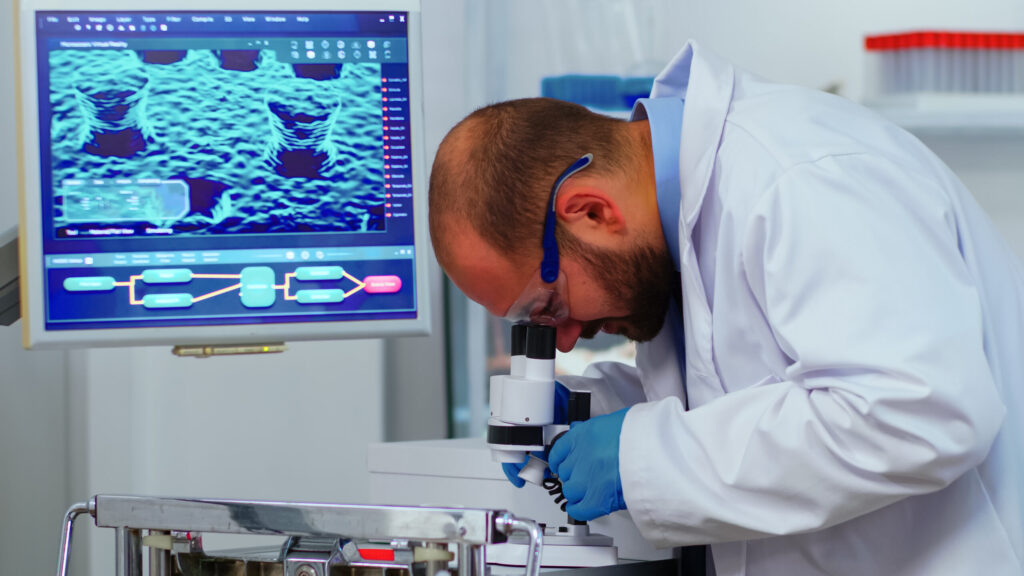Ehlers-Danlos syndrome (EDS) is a broad term that includes a group of hereditary disorders related to what is known as the connective tissue of the body. Connective tissues support the body. They include the skin, joints, tendons, ligaments, blood vessels, internal organs, and bones.
EDS can present as a range of symptoms that may be quite mild, severe, or even critical with possibly life-threatening complications. Ehlers-Danlos syndrome includes many subtypes, each considered a separate condition with its genetic basis and different manifestations. With the starting point of that understanding, a more accurate diagnosis is possible.
Ehlers-Danlos syndrome may be readily apparent to a medical professional without genetic testing, based on reported symptoms or a physical examination. After a preliminary diagnosis, a referral may be made for a skin biopsy to be examined under an electron microscope, and sometimes for genetic testing that may help confirm the diagnosis.
Typical signs
When there is no other readily available explanation, these symptoms may be markers for various types of Ehlers-Danlos syndrome:
- Late walking, with loose or hypermobile joints. Joint hypermobility refers to an unusually large range of motion in some or all of the joints of the body. People with hypermobility can move and twist their limbs into positions that the average person may find impossible. While hypermobility is itself common, it should alert parents, caregivers, and medical professionals to the possibility of EDS.
- Atypical or easy bruising, scarring, or bleeding, sometimes with thin and translucent skin, which can be fragile.
- Fragile and “stretchy” or hyperextensible skin. Skin that can be pulled and stretched way beyond the average.
- Atrophic or indented scarring. This can appear under normal circumstances as a result of acne or chicken pox, but in the case of Ehlers-Danlos syndrome, the scarring is unexplained and more extensive.
- Vessels and arteries may rupture (tear). In minor cases, this can lead to bruising and discoloration as blood from a minor torn vessel spreads (hemorrhages) beneath the skin. In serious or fatal cases, most often with the form of EDS called vascular Ehlers-Danlos, this type of rupturing affects internal blood vessels, the intestines, or the uterus, causing them to tear open, which can lead to death.
- Hollow organ rupture. A hollow organ refers to any internal organ that is hollow or that includes an enclosed space. This can refer to the stomach, intestines, heart, bladder, and so on.
Ehlers-Danlos Genetic Testing
In some cases, because EDS is a group of syndromes, and because it can be caused by such a large and varied group of genetic causes, Ehlers-Danlos may not be diagnosed through genetic testing.
However, with some of the above-noted flags that are characteristic of Ehlers-Danlos, skin or other samples may be sent for genetic testing, and that may help confirm a diagnosis. This might include diagnostic genetic testing and rare disease genetic testing.
Treatment
Most of the treatment for EDS comes down to managing and monitoring symptoms. It is important to be in close contact with a variety of healthcare and related care professionals for support, monitoring, and life-planning help.
A family doctor or other healthcare provider can give you a referral or recommend:
- A physical therapist teaches exercises that can help strengthen joints to avoid injury and minimize pain.
- An occupational therapist to help advise on equipment that may be useful, and can help manage daily activities
- For long-term pain coping skills, counseling and cognitive behavioral therapy may be useful
- A genetic counselor to able to help you learn more about your specific variant of Ehlers-Danlos as well as more general information, and can tell you about EDS causes, how it may be inherited, and the risks of passing it to your children.
Genetic Counseling
Genetic counseling is advisable as early as a possible marker for Ehlers-Danlos is detected. They can help you plan for your own, your child’s, or your loved one’s highest level of developmental care, potential therapy, and long-term well-being.
For babies and children with genetic diseases and syndromes, genetic counseling can be a crucial step in determining whether and how to intervene to try to offer the best possible outcomes for their health, comfort, development, and social feelings and to plan for their future.
For a comprehensive understanding of the diagnostic process, including the role of genetic counseling and the challenges in identifying specific gene mutations, refer to our article on Genetic Diagnosis for Ehlers-Danlos Syndrome.



